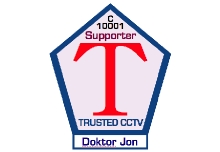 |
||
 |
||
![]()
![]()
![]()
![]()
![]()
![]()
![]()
![]()
![]()
![]()
![]()
![]()
![]()
![]()
![]()
![]()
![]()
![]()
![]()
![]()
![]()
![]()
![]()
![]()
![]()
![]()
![]()
![]()
![]()
![]()
![]()
![]()
![]()
![]()
![]()
![]()
![]()
![]()
![]()
IMPORTANT: No material may be reproduced, copied or redistributed from this site, without the express written consent of doktorjon.co.uk
All the detailed information on this site is provided in good faith; and as such, Doktor Jon does not accept responsibility for any consequential loss, injury or disadvantage resulting from any individual or organisation acting on the details contained herein.
© doktorjon.com 2004 - 2012
![]()
![]()
![]()
![]()
![]()
![]()
![]()
![]()
![]()
![]()
![]()
![]()
![]()
![]()
![]()
![]()
![]()
![]()
![]()
![]()
![]()
![]()
![]()
![]()
![]()
![]()
![]()
![]()
Please Note - Doktor Jon is currently upgrading his site, so you may see some layout changes on various pages, whilst the work is in progress.
Hopefully, the complete re-design and improvements, should be completed during 2012.
To carry out a simple evaluation of whether a camera is performing correctly in terms of its suitability for target identification and evidential recording, there are four basic factors which need to be considered:-
1. PICTURE QUALITY - This will relate to the camera / lens combination being used, how well it has been set up, whether the lighting is adequate and appropriate for the task, and whether the transmission system is performing correctly.
2. TARGET SIZE - In order for a target (for example a person, a face or a vehicle number plate) to be recognisable, it has to be displayed on the screen in sufficient size and clarity to be useful; if it’s too small, then it just won’t do the job.
It’s worth briefly mentioning here that many of the very latest networked “MegaPixel” (and HD) cameras are quite capable of reproducing extremely good detail from wider angle views, as these cameras are still relatively new and not widely used, this assessment has not yet been updated to take account of their higher level performance.
3. TARGET PRESENTATION - Apart from having a target on screen in sufficient size to be identifiable, it is also vitally important that the target is presented to the camera in such a way that it is recognisable. After all, you could fill the screen with the top of someones head, but it doesn’t mean you can easily identify them from their bald patch! So getting the camera pointing in the right direction, and from the correct position, is far more important than most people understand.
4. TARGET DURATION - Having established that the size and presentation of a target is key to producing a usable image, the final factor is the length of time that the target remains in view of the camera (of course, this relates to the time on screen, with the appropriate sizeing and presentation).
This factor is particularly important where for example there are many cameras connected either to an analogue Time Lapse video recorder, basic Digital Video Recorder (DVR), low bandwidth network, or even very high resolution MegaPixel camera's that may only output less than three images per second.
As an example, if the target only presents itself on screen in an ‘optimised’ position for perhaps two seconds, then that isn’t very useful if the cameras image is only being recorded once every three seconds.
You may have a terrific image of a suspect on screen, but it may never get to be recorded. The object of the exercise is to achieve as many recorded quality images as possible. This same principle could equally apply to some modern IP Video cameras, where the speed and load on the network (amongst other things) will dictate how many pictures can be transmitted each second.
All the information for testing the cameras performance can be recorded on the simple TRUSTED CCTV Camera Evaluation forms.
The next stage of this "TRUSTED"© Basic CCTV assessment >>
Can you help? ....Subject to feedback, further work will be carried out on developing this specialist section. If you have any specific requests for more information, comments or suggestions for inclusion in this project, or would just like to offer your support, please don't hesitate to let me know:-
e-mail to: info[at]doktorjon.co.uk

How can you tell if your
Video Surveillance System
is 'TRUSTED'©
Whilst the "TRUSTED"© campaign is about raising awareness of how to improve the quality of images and recordings, it is vitally important that CCTV users have a relatively simple way of measuring their systems effectiveness, for identifying and recording defined targets.





